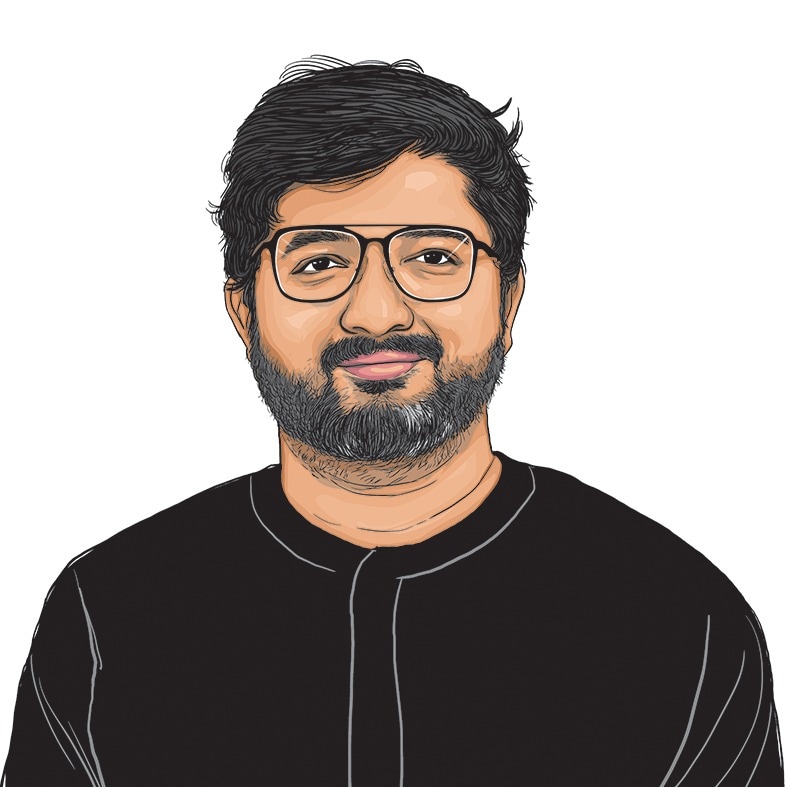Opinion From Red Line Buses to Wrestling Rhyme: Hulk Hogan’s surprising cultural impact on 90’s India
WWE shaped how we saw the US in much the way Ramanand Sagar’s Ramayan moulded our view of mythology. And America was, at least back then, a mythical place
 Hulk Hogan had his share of controversies, a reality show and something of a sordid personal life. But for those who idolised him when they were five, who remembered the rhyme about his costume when hanging out of the door of a bus, there will always be a soft spot for Hulkamania (AP Photo/Alex Brandon, File)
Hulk Hogan had his share of controversies, a reality show and something of a sordid personal life. But for those who idolised him when they were five, who remembered the rhyme about his costume when hanging out of the door of a bus, there will always be a soft spot for Hulkamania (AP Photo/Alex Brandon, File) Around 1993-94, a six-year-old was hanging on for dear life onto the railing with one hand and the other clutching his mother lest he fall out the door of one of Delhi’s once-infamous Red Line buses. Terrified, but unwilling to show it, the boy shouted, “Hulk Hogan ki yahi pehchan, peeli kacche, phati banyaan”. Everyone in earshot, including the driver and conductor, burst out laughing and soon, the kid had pride of place – sitting on the large covering over the gear stick, next to the driver.
Hulk Hogan (the stage name Terry Bollea was known by), who died on July 24 at the age of 71, likely didn’t realise the impact he – and the WWF, later WWE – had on a country that had just been opened up to America. But for a generation, particularly the boys among them, wrestling was our soap opera and our cultural context. It shaped how we saw the US in much the way Ramanand Sagar’s Ramayan moulded our view of mythology. And America was, at least back then, a mythical place.
Liberalisation – both in terms of how it pushed up upper-middle-class incomes and impacted culture – didn’t truly hit till the 2000s. In the early ’90s, most of us were much more “local”, still struggling to be part of the flattening of culture that shows like Friends and Seinfeld would later bring about. Today, Americanisms are a part of the vocabulary for most Indian English speakers. “My bad” (instead of my fault) and “I’m good” (not as a moral assessment but to say “I am well”) are thrown about without a thought for the poor English teacher who taught us the basics of grammar.
It wasn’t so when Hulkamania – and Bret Hart, The Undertaker, Lex Luger, Shawn Michaels, Razor Ramon and Yokozuna – came into the lives of today’s millennials. Nonsense rhymes like the one uttered on the bus were the most common form of comedy: “Yokozuna went to Poona, eating Choona” or “Undertaker, ice cream maker”, etc. WWF Trump cards were the card game of choice, and recreating wrestling matches was practically a sport. The first “fancy” birthday parties were wrestling-themed – with masks and championship belts. The first designer cakes were shaped like wrestlers.
As the kids grew up, WWF-WWE kept up. The risque “attitude era” meant boys kept imitating Stone Cold Steve Austin and Triple H – giving the middle finger and the “s***k it” gesture. It was dangerous, feeding the proto-adolescent’s desire for risk-taking and masculine assertion.
Wrestling – and most of all Hulk Hogan – clearly had a deep cultural impact. And this impact became a weapon for the assertion of American soft power and propaganda. Hogan, “a good guy” for much of his career (he did “turn heel” and become “Hollywood Hogan” for a while), was the first global wrestling superstar. And he was an all-American hero. His nemesis was the Iron Sheik (an evil, conniving character from West Asia). His theme song was ‘I am a Real American’ and justified military intervention in the name “fighting for the rights of every man”.
And we swallowed it all up, as kids, without knowing better. Blond American, good guy. Brown and Black, not as much. Through soap-opera plots, Hulk and the WWF kept us hooked.
Wrestling today no longer pretends to be “real”; it has many more stars and looks way more slick. In deference to the Indian market, it made superstars of the Great Khali and Jinder Mahal. Hulk Hogan had his share of controversies, a reality show and something of a sordid personal life. But for those who idolised him when they were five, who remembered the rhyme about his costume when hanging out of the door of a bus, there will always be a soft spot for Hulkamania.
aakash.joshi@expressindia.com






